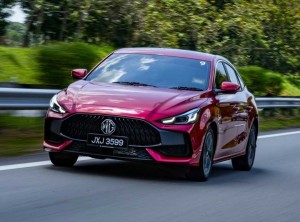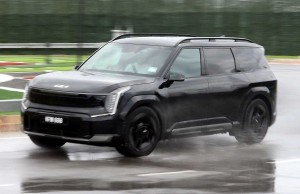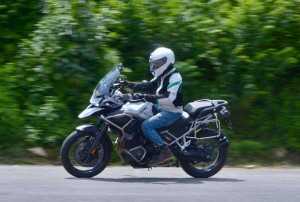As breakthrough EV battery pursuit falters, Quantumscape seeks hedges
By BLOOMBERG | 15 May 2023
DETROIT: QuantumScape has long talked a big game about its potential, and rightfully so - it’s pursuing a holy grail in the field of battery-materials science that’s eluded researchers for decades.
The solid-state battery technology the startup has been working on for electric vehicles promises much greater range and 15-minute charge times.
After its spinoff from Stanford University in 2010 and as it was going public a decade later, automakers lined up and investors salivated.
But in the years since its merger with a blank-check firm, QuantumScape’s lofty ambitions of scaling a big battery breakthrough have run into some grounding manufacturing realities.
The company is now planning to find customers in the consumer-electronics sector as it takes longer to commercialise automotive-grade cells.
It’s a well-worn path for battery startups struggling to meet the rigorous, years-long qualification process required to become an auto supplier.
But don’t call it a pivot - electric vehicles are still the top priority, Chief Executive Officer Jagdeep Singh told Bloomberg this week.
"We’re not pivoting to anything. We remain focused on automotive as the primary market,” Jagdeep said in an interview.
"From an investor standpoint, why wouldn’t you? If your product can serve additional markets, why wouldn’t you want to take advantage of that?”
QuantumScape is the fifth startup for Jagdeep, who became fascinated with energy storage while thinking about the batteries in his Tesla Roadster.
Bill Gates and venture capitalists Vinod Khosla and John Doerr were early investors.
Tesla co-founder JB Straubel sits on the board. And Volkswagen, the company’s biggest shareholder, signed an agreement to build a battery plant with QuantumScape technology if it proves viable.
All that star-studded backing contributed to QuantumScape briefly being valued as a US$50 billion company in December of 2020, and the startup raised about US$1.3 billion in two trips to the equity market.
Why the hype in the first place?
All lithium-ion batteries have the same basic components: two electrodes (a cathode and an anode), an electrolyte that helps shuttle the charge between them, and a permeable membrane called a separator that keeps the anode and cathode from touching.
Solid-state batteries replace the conventional liquid electrolyte and the separator, which are both flammable, with a solid separator made of ceramic, glass or polymers.
This innovation, if proven to work beyond the lab and reproduced flawlessly hundreds of thousands of times in a factory, could make electric-vehicle batteries safer, smaller and faster-charging.
The flawless manufacturing bit is where QuantumScape has run into some trouble. And it’s far from alone.
Incumbents including Panasonic and LG Energy Solution spend months churning out useless scrap from their machinery before making a cell good enough to be placed in an automobile.
That’s absolutely normal and is part of why battery manufacturing has historically been a low-margin business with high barriers to entry.
Unlike other solid-state startups who stuck to "drop-in” tech that could easily slide into existing production lines, QuantumScape is trying to build a new mousetrap.
It invented a proprietary cell format, which means it also has to design custom tooling to make that cell, then wait months to have the equipment delivered, then begin the grueling process of testing the equipment and working out the kinks.
This is the Silicon Valley moonshot approach Jagdeep is a deep believer in - if it’s not really risky and really hard, it’s not worth your time.
That plan seemed to be working until July of last year, when executives disclosed in their second-quarter earnings report that there were contamination problems in the separator films the company was producing at its manufacturing site in California.
A month prior, Celina Mikolajczak, a Panasonic veteran who was leading QuantumScape’s manufacturing efforts, abruptly resigned after little more than a year. The company cited "differing management styles.”
In its third-quarter report, QuantumScape said it signed a new agreement with Volkswagen that removed the time constraint for site selection of their joint venture pilot facility planned for the US or Germany.
While the companies said they remain committed to bringing vehicles equipped with solid-state lithium-metal battery technology to market as early as practicable, QuantumScape also started putting more emphasis on the consumer electronics market in its investor letters.
Volkswagen said it continues to work with QuantumScape to scale production of solid-state batteries and acknowledges that it’s a "challenging step.”
Jagdeep spent nearly an hour with Bloomberg reporters last week discussing QuantumScape’s strategy and manufacturing challenges.
Here are some highlights of the conversation, edited for length and clarity.
You’re adding these new market segments. Now that you’ve done the cell testing, is anybody buying?
The consumer industry has received cells and the testing has gone well. We would not be talking about consumer if we didn’t believe there was a strong demand from consumer.
Your original timeline for putting your batteries in an EV was as early as 2026. Now you’re saying the target for a B sample - a test cell for automakers - is end of 2025. It typically takes about 24 months to qualify a B sample, so that would be end of 2027. Is that a fair read?
I don’t have that visibility. Every automaker that you talk to has their own timeline. We want to get away from making precise predictions on things that we don’t control precisely.
What does matter is, when can we get high enough volume B samples - meaning it has the functionality and a certain level of maturity - into the hands of customers so they can start the qualification process?
Our goal is to get that sample at the end of 2025 with high-volume equipment.
In most investor communication, you spend a great deal of time talking about battery performance. The question was always, can you manufacture it? We haven’t heard you talk about the yields on the separator film production. Why aren’t you telling investors about that?
What we have said is, we know we need to improve quality, we need to improve consistency, those things get into reliability, and reliability is a key goal for any battery.
It’s not something that happens overnight. Manufacturing takes a long time in large part because the tooling takes time.
When you order the equipment, it can take a year to two years to qualify it and turn it on. As you get into more automated tooling for higher volumes, not only do you get higher throughput, but quality gets better and your yields get better.
We’ve already seen the impact of improving quality on our yields. But we don’t disclose those types of details about our system. Some of our customers who are close to us have a good view of the process and what we’re doing.
You said on the last call you have US$1 billion in liquidity, and you filed a US$400 million at-the-market shelf in late February that you’ve yet to tap. Is that enough cash to get to the B sample by the end of 2025?
The current cash balance without the ATM gets us into the second half of 2025.
If you add ATM on top of that, US$400 million, and using the guidance we’ve provided on cash burn for this year, that’s another year on top of that.
That will get us well into 2026. In that scenario, we have enough buffer to get these B samples into the market.
Tags
Autos News
Reviews

MG5: Slick and comfortable cruiser

8.2
Kia EV9: Prime cut

8.0
Triumph Tiger 1200 GT Pro: High adventure on two wheels

8.0
Honda Civic Type R (FL5): Ride on the wild side

Mitsubishi Xpander facelift: Expanding the reach

First drive of Geely Galaxy E5

8.2
Honda XL750 Transalp: Rising to the challenge

8.6
Toyota GR Supra manual: Joy on the go
Videos

Aveta VTM 250; Affordable & Road Legal Adventure Bike

Nissan to launch affordable Vehicle to Grid technology from ...

Aveta VTM 250 hits Malaysian roads
